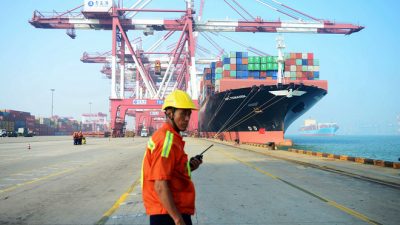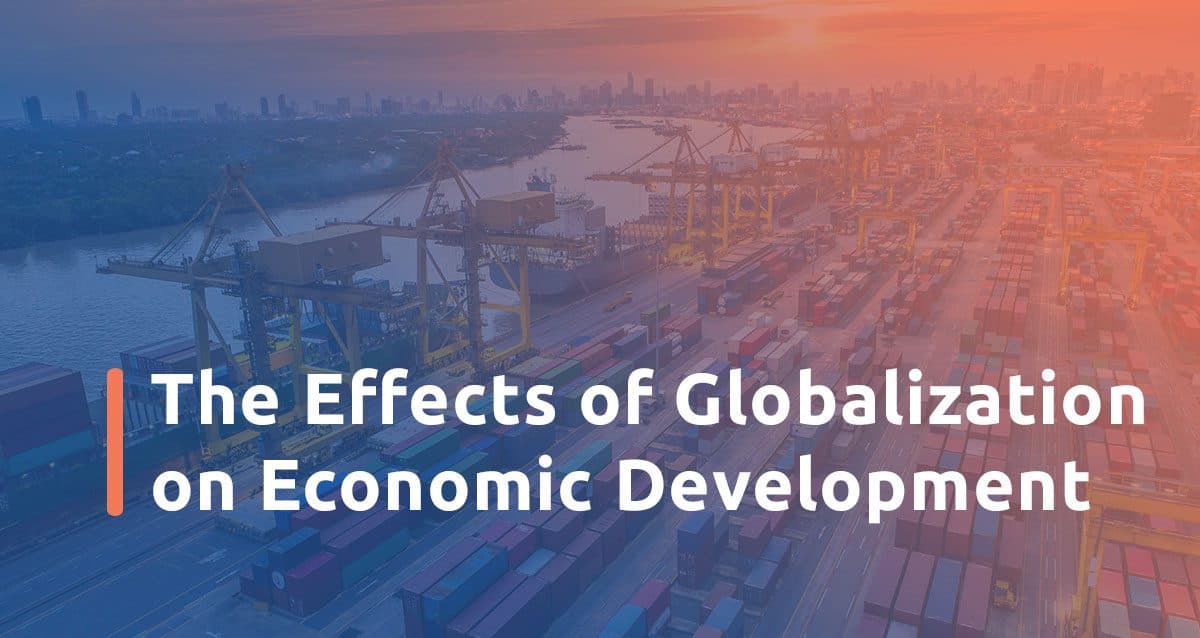This article was published in Economic Development Now, an online publication available to members of the International Economic Development Council, and is being reprinted with its permission. To have access to IEDC’s journal and on-line articles and its many services, you can become a member by visiting https://www.iedconline.org/

The widespread consequence of COVID-19 has caused governments, businesses, and individual consumers around the world a sudden struggle to produce and acquire basic products and materials. Exposing the fragility of the modern global supply chain. While the crisis rages on, the need to design smarter, stronger, and more diverse supply chains has become collectively obvious.
The pandemic has driven the business world to rethink the value of menial everyday things – like walking comfortably down the street or shaking someone’s hand – and has struck the global trade and investment market at an unprecedented speed and scale.
To stipulate that COVID-19’s ripple effects have resulted in the world’s most difficult economic situation since WWII, would not be considered hyperbole. The lockdowns and travel restrictions, implemented to contain the virus, has seen businesses worldwide come to a collective halt, or at the very least, a slow burn. Physical distancing measures mean that labour supply, transport, and travel were directly impacted. Certain sectors of national economies have been shut down, including tourism, hotels, restaurants, non-essential retail trade, and manufacturing.
Almost immediately, questions have transitioned from whether there will be a global recession to how deep it will go and how long will it last. According to the World Trade Organisation, global trade is expected to fall by between 13% to 32% in 2020 and estimates of the expected recovery in 2021 are “equally uncertain.” Decisions taken now will determine the future shape of the recovery and global growth.
As of March 30, most Chinese exporters had resumed at least 70% of their production capacity, according to the country’s Ministry of Commerce. While production is enroute towards recovery
factories now face a lack of foreign orders due to the impact on demand from the virus’ spread in the US and Europe.
As the ripple effect of business closures continues, layoffs and furloughs has become the norm with overnight employment rates spiking nationally. Western governments have been injecting money back into its economies, to keep the market from collapsing. Rescue loans and bailouts have been given out in unprecedented amounts and consequently, citizens are reluctant to spend money beyond bills and food, and businesses revenue has taken a major hit.
The United Nations Conference on Trade and Development (UNCTAD) has revised its forecasts about the effects of the pandemic on global FDI flows from a -5% to -15% drop to -30 to -40%. Assuming it is not downwardly revised again, those losses are arguably the most dramatic at any time in modern history.
Using the financial crisis of 2007-2008 as a reference point, FDI flows fell by 37% in 2009, down to $1.1 trillion. In the wake of COVID-19, the virus has wiped off roughly $500 billion in foreign investment with the worst more than likely still to come.
Questioning the global supply chain
The majority of industries spent March through April and most of May at a standstill, the implications of which for the international production markets will leave long last and widespread effects on the economy around the world. While it is easier said than done, global industrial chains will likely reduce is dependency on China and will focus instead on localized production. Being one of the world’s top exporters and the planet’s second-largest economy, China has been a major beneficiary of globalization in the past couple of decades. The pandemic has pulled the US and China into its worst relationship in the past 40 years and it is becoming all the more likely that the two countries will lead to further distancing (no pun intended) rather than fortified cooperation.
The extensive impact of China’s manufacturing lockdown has highlighted the problem with global supply chains. When Chinese factories closed, it showed the lack of flexibility and the importance to diversify future supply chains, instead of relying so heavily on China. Manufacturing industries in Vietnam, India, and Mexico are likely to benefit from the eventual shift.
“For many years now, global manufacturing organizations have sought to concentrate their supply chains. While this has had the benefit of reducing costs, the lack of supply chain diversification has harmed companies’ ability to respond swiftly to supply chain disruptions of the kind we are seeing today,” says Davor Davidovic, Executive VP of Operations, ResearchFDI Inc. “Although cost will remain an important factor in the years to come, companies will likely look to replicate supply chains according to a regional, rather than a global, model. In so doing, these companies will diversify the risk associated with any individual supply chain and, by bringing supply and demand points closer together, reduce the risk associated with logistical disruptions.”
The virus has exposed the vulnerabilities of complex global supply chains that have been built on lean manufacturing principles. Looking at the healthcare sector as an example, countries were forced to import personal protective equipment, which exposed the risks of inventory and single-sourcing models.
The outlook for FDI for the remainder of 2020 and into 2021 points towards an accelerating trend towards digitalization. Governments looking to instill economic recovery could veer towards World Digital Competitiveness through “Digital FDI.” From virtual meetings, an increase in online orders, the potential of drone deliveries, and automated manufactories, digital services throughout a number of sectors and activities is growing rapidly.
Digitalization could become the key to building a stronger and more sustainable global supply chain.
A digital revolution has the potential to drastically alter the traditional ways of conducting business. Digital services would reduce obstacles caused by physical barriers and distancing, simplify supply, and value chains, and provide fast delivery of good and services.
As people expect for ‘things to get back to normal,’ it has become increasingly apparent that life will be divided into a pre-pandemic and a post-COVID-19 world.
About ResearchFDI, Inc.
Based in Montreal, ResearchFDI is a specialized market research firm that provides customized lead generation and business intelligence services for economic development organizations and regional promotion agencies, intended to identify and capture FDI and direct investment opportunities. We position Economic Developers in front of corporate decision-makers that are seeking to expand or relocate their businesses to new geographic locations. We are focused on helping our clients create important business relationships that will serve to grow awareness of their region, promote its economic strengths and attract direct investment.
Read also:
- Even before Trade War, Coronavirus Outbreak, Globalization had Cooled off
- How COVID-19 is Affecting the Global Economy
- Brexit – Where Are We today? Implications for North American Market
- How Incentives Shape Economic Development
- Goodbye NAFTA, Hello USMCA?
- GENERAL MOTORS FINISHED OFF THE DECADE WITH MANY UPS AND DOWNS – LET’S UNPACK IT



